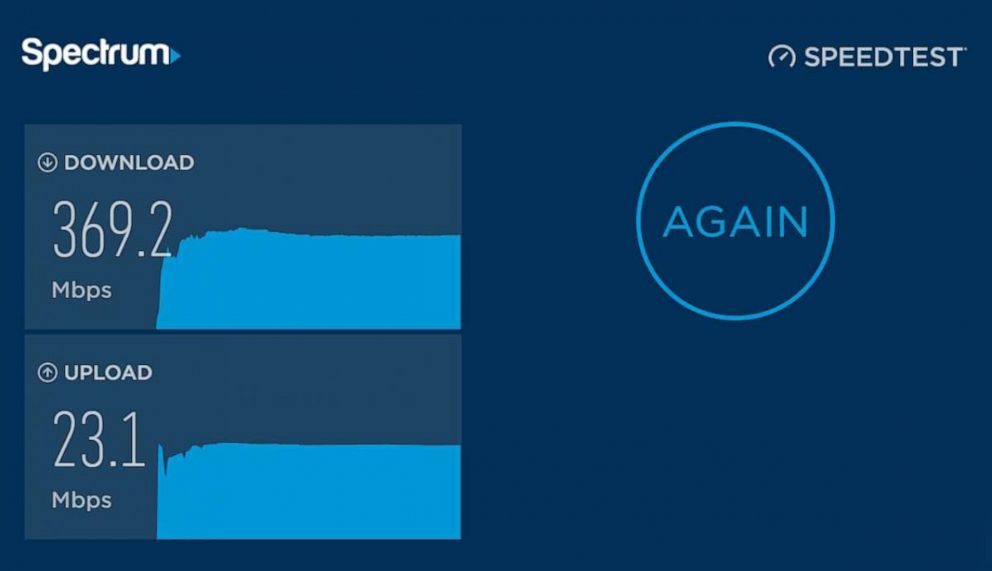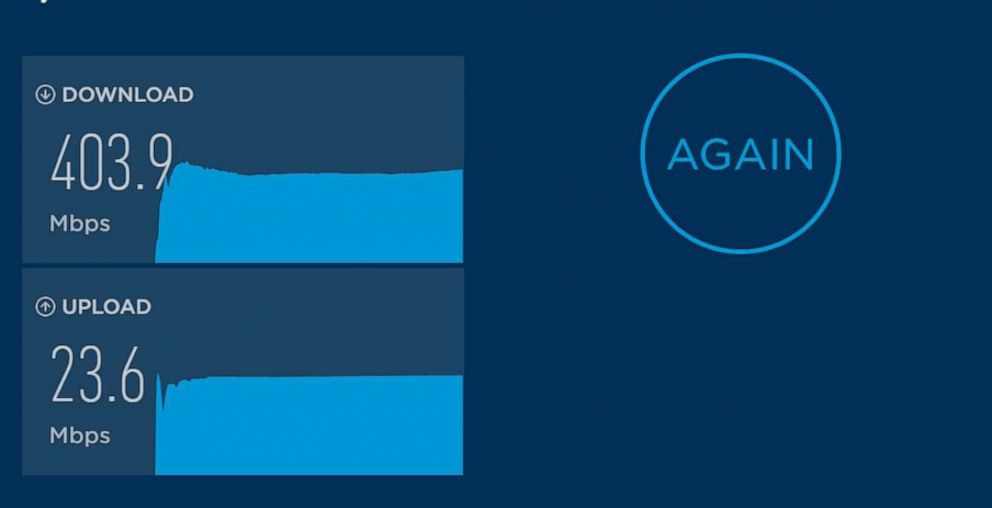Testing your internet speed: Are you getting what you pay for?
There are several ways to measure your internet speeds.
Internet bandwidth is undergoing the ultimate stress test. A significant portion of America's workforce has shifted to working from home during the coronavirus pandemic.
Since March, approximately 50 million workers have filed for unemployment insurance. Add into the mix a scorching heat wave that's delivered triple-digit temperatures to parts of the country that's keeping even more indoors, and it becomes abundantly clear that we need our internet connectivity now more than ever.
But how do you know if you are getting the internet bandwidth speeds you are paying for with your service? There are several ways to measure your internet speeds.
Measuring Internet performance
Most internet service providers offer their own online speed gage. For instance, Spectrum has an online speed test tool.
But you can use any internet provider's tool, not just your own provider's. AT&T has an online tool as does Verizon and Comcast's Xfinity. In fact, it's better to use several tools for comparison and to get an average baseline. Testing will also tell you if you are getting close to the speeds advertised with your service level.
There are two ways to test your internet speed. First, test it using a device connected to your Wi-Fi. Then test it using a computer or laptop with an ethernet port connected to the ethernet port of your home router or modem (if you have both).
Testing both ways lets you know which connection method is fastest. Typically it's going to be with a device hardwired to your router using an ethernet cable. This is because most ethernet ports support up to 1 Gigabit of speed, or 1,000 Mbps. That speed is typically not provided with wireless connectivity because of interference from other routers in the area and even interference within a home. Mirrors, glass, microwave ovens, walls … all of these objects can slow down Wi-Fi.
Fortunately, most of the newer wireless routers support Gbps speeds. But the speed listed on the router box is theoretical -- like if your environment was completely free of interference.
For example, here is the download/upload speed of a laptop connected to a Wi-Fi network with Spectrum Internet (with a plan offering up to 400 Mbps speed) using Spectrum's online speed test:

The test shows the bandwidth with this particular laptop connected wirelessly: 369 Mbps down and 23 Mbps up.
Now, here is the same laptop connected to the same Spectum broadband but hardwired to an ethernet port on the router, in this case the Linksys WRT1900ac which supports Gbps wired speed. (Note: It's a good idea to disable the device's Wi-Fi before testing a hardwired connection, so you aren't inadvertently testing Wi-Fi).

A slight bump at 403 Mbps down and 23 Mbps up. The speed isn't a full Gbps, because the level of internet service tested only supports up to 400 Mbps. In this test scenario, there isn't a significant difference between wireless and wired speed.
If your internet service agreement provides for Gigabit speed, keep in mind there are many factors that can still slow down the wired connection. The device you are connecting may not have a LAN adapter that supports a Gbps connection. The ports on the router also must support Gbps connectivity. Also, you need to use CAT5e or CAT6 ethernet cable to leverage the higher speed.
Other tips to help bump up your connectivity
Connect to the 5GHz wireless band. Most current routers offer 2.4 and 5GHz networks. 5GHz can provide faster speed, although its range is shorter than 2.4GHz.
Make sure you perform firmware upgrades on your router and devices and install the latest software for your wireless and LAN adapters. You can consult your hardware manufacturers about firmware upgrades.

More laptops are shipping without a LAN/ethernet adapter. You can purchase a USB adapter supporting Gbps if you want to hardwire a laptop to your router, but be aware that the USB connection can also slightly slow down the Gbps speed.
Use online speed tests to determine if your router is in the best location in your home. If you can, move the modem and router to different areas and see if you get better bandwidth.



